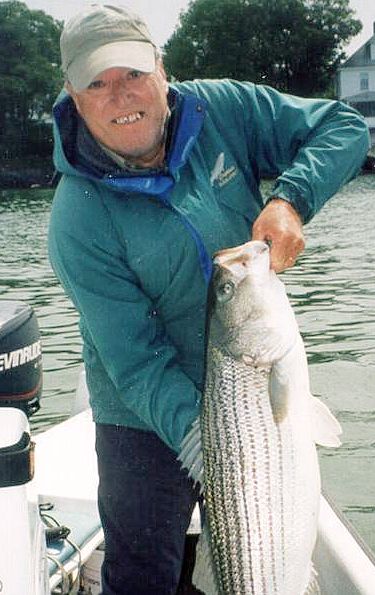
It’s 3:00 A.M., June 7, 2010. I’m preparing for another day of guiding on Cape Cod. It’s raining steady, blowing 15 to 20 from the ENE and cooler than previous days. Fishing should be good!
Fishing has been good this spring on Cape Cod and I will soon return to Maine to see if the striper migration is strong there.
Good fishing on the Cape meaning we are catching larger fish this year using flies. The average size of our catch is running around 30 inches! That’s nice fishing right? Yes it is, but the down side is there aren’t big schools of any size fish. The up side is, a few 18 to 20 inch are showing up. Not large schools of the little guys, but a few. The end of the season will tell us if there is any improvement along the entire coast.
Like previous slumps in striped bass populations, larger fish always become easier to catch as the biomass of fish shrinks and only a couple of healthy year classes of larger fish dominate the fishing. The little guys aren’t around taking your offering before the lazy big guys get it. How many times do you see a smaller fish hooked, being chased by a much larger fish? The smaller fish is more aggressive, so gets the meal first. The larger fish are most likely always there but don’t get hooked because the aggressive smaller fish find the hook first.
One way to avoid the smaller fish is to use over sized flies. A 10 to 12 inch fly on a 3/0 to 5/0 hook will attract the smaller fish but they won’t get hook because the hook is too big. You will feel the small fish “nipping” at the larger fly – that’s a good thing because the “nipping” action will at times alert the larger fish to come take a look and hopefully get hooked.
Not a set in cement process, but usually it is wise to fish the jumbo flies slow and deep using the heaviest sink rate line you can handle. Rattles in the fly also will help.
Jumbo flies have a much material attached which tends to float. So it is important to add weight to jumbos. I always tie in extra weight to the front of the hook shank prior to tying the fly. When I finish the head I code it with colored bands in the Carries Stevens trade mark style. One red band tells me the fly is weighted. One orange band tells me the fly has a rattle. Both colored bands tell me the fly is weighted and has a rattle. This system keeps it simple.
Believe it or not, but The Atlantic States Marine Fisheries Service is proposing to increase the commercial quota on striped bass. Hard to believe but true.

No comments:
Post a Comment